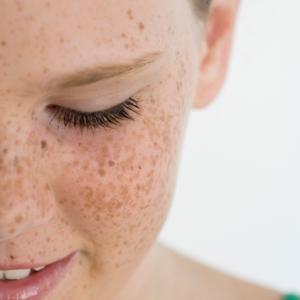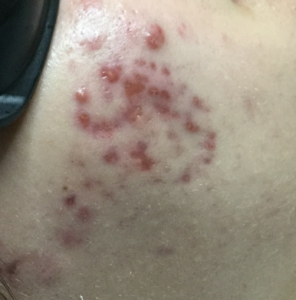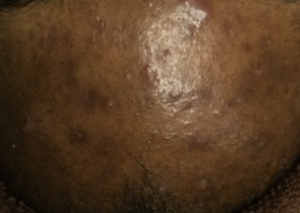The Secrets of Dark Spots And How To Prevent Them
We’ve all had the occasional blemish on our face that, for some reason or another, never quite went away. Whether large or small, dark marks can range in color from pink to dark brown and even purple and can last for months on end, if not forever. These relentless spots are referred to as hyperpigmentation and are likely the result of sun exposure or, more often than not, popping a zit.
What is pigmentation?
Pigmentation is an accumulation of melanin in the skin that the body uses to protect the cells underneath it. It’s helpful to think of pigmentation like little umbrellas that are trying to protect the underlying skin cells from outside damage. These “umbrellas” are created by melanocytes, which are immune cells in the skin that make color. Everyone has the same number of melanocytes. However…
If you have a deeper skin tone, your melanocytes are way more efficient than if you have very light skin. For example, a fair-skinned person’s melanocytes tend to produce pigment in clumps, which become freckles on the face. A person with a deeper skin tone will produce pigment more evenly across the face and body, giving them an even color.
What’s the difference between post-inflammatory erythema and post-inflammatory hyperpigmentation?
Post-inflammatory erythema (or PIE) and post-inflammatory hyperpigmentation (or PIH) are not quite the same thing. PIE refers to dark red or purple-toned patches left behind by acne. PIH is the muddy brown or black marks caused by an inflammation that triggers an overproduction of melanin. Causes can include sun exposure, acne, injury, changing hormone levels (see also: pregnancy), and simple aging. With a darker skin tone, and more efficient melanin production, you are way more prone to PIH.

Freckles 
PIE marks 
PIH dark spots on dark skin tone
What are the main triggers of dark spots?
Our melanocytes are known to hyper-react in response to an injury of some sort. Now, that can mean a variety of things: a mosquito bite, a scratch, a prematurely popped zit, in some cases even microdermabrasion. In the face of acute inflammation, our skin creates more pigment in response and boom: a dark spot.
How can you prevent hyperpigmentation?
There four main ways to prevent and treat hyperpigmentation:
- Cardinal Rule #1:Wear daily SPF and NO PICKING! AKA reduce exposure to “injury.” The most common injury for the skin is sun damage, so be sure to wear SPF every single day to keep any new dark marks at bay. Picking at pimples and scabs is also a definite no-no when it comes to keeping the skin clear.
- Ice the lesion or specific area. If you slacked on Cardinal Rule #1, applying ice directly onto the skin for up to 60 seconds twice a day significantly calms inflammation and helps to prevent extra pigmentation from forming.
- Be gentler with your skin. The use of scrubs (even mild scrubs) increases your chances of micro-damage to the skin barrier and therefore hyperpigmentation develops. Instead, try an exfoliating enzyme once or twice a week.
- Try mild lighteners. Look for ingredients like licorice root or glabridin, arbutin, daisy extract, bearberry, and azelaic acid. These ingredients help to break up existing pigment and diminish the look of dark spots.
What treatments in Rhode Island can help?
If you’ve tried all of the above methods and are still experiencing hyperpigmentation (either PIE or PIH) or would like to supplement your at-home care, Viriditas Beautiful Skin Therapies in Providence, Rhode Island offers professional-administered treatments to combat the look of dark marks.
For the month of October, treat yourself to any HydraFacial service at Viriditas Beautiful Skin Therapies and receive a free boost of Brightenol with your service. Brightenol is a concentrated facial serum with multiple brightening agents that work together to eliminate the look of dark marks and hyperpigmentation, so you leave brighter, softer, and happier.

[…] in skin texture, color and other signs of aging are caused by inflammation. Changes that are visible on the skin often […]
[…] Post-inflammatory hyperpigmentation (PIH): brown marks caused by melanin response. […]